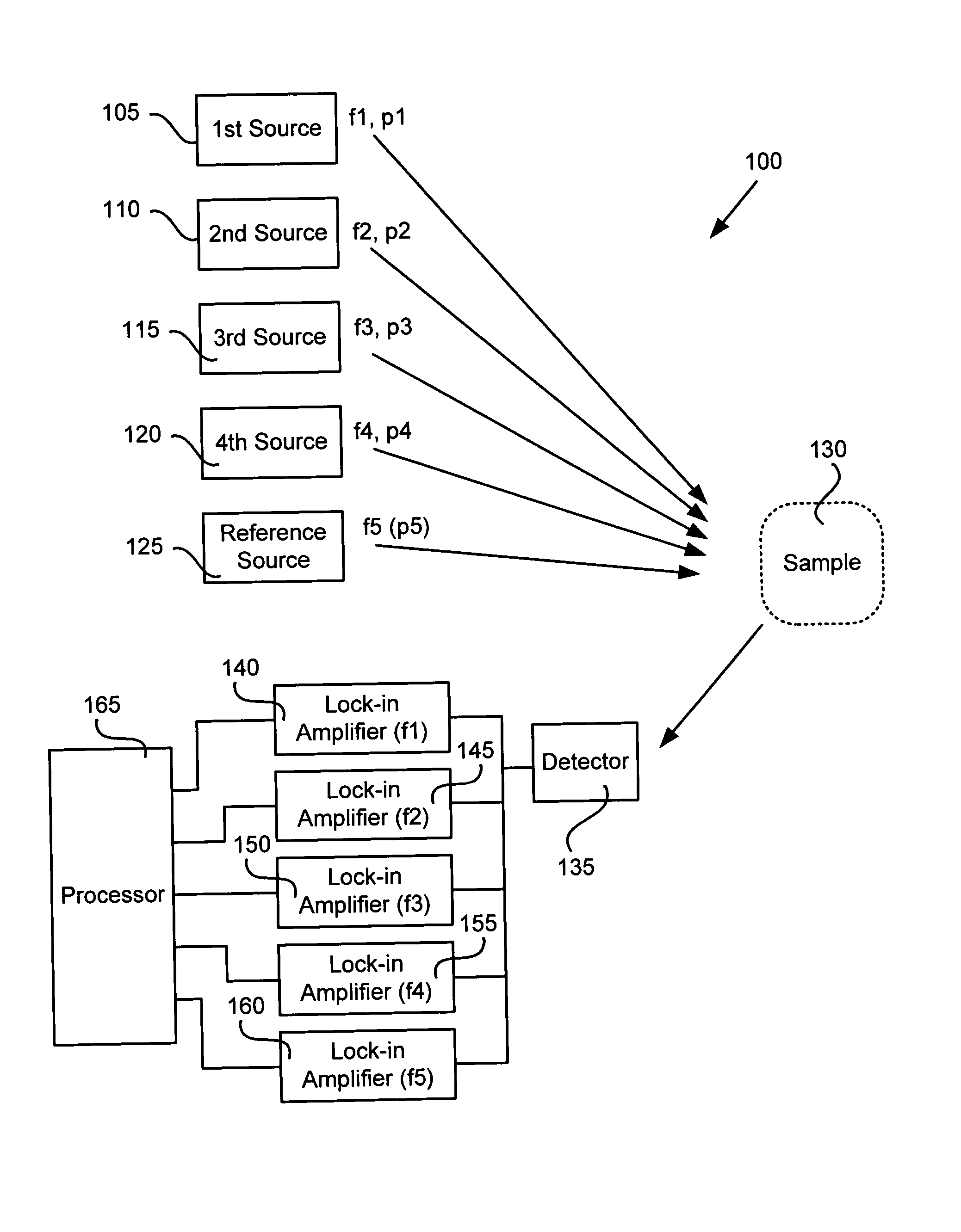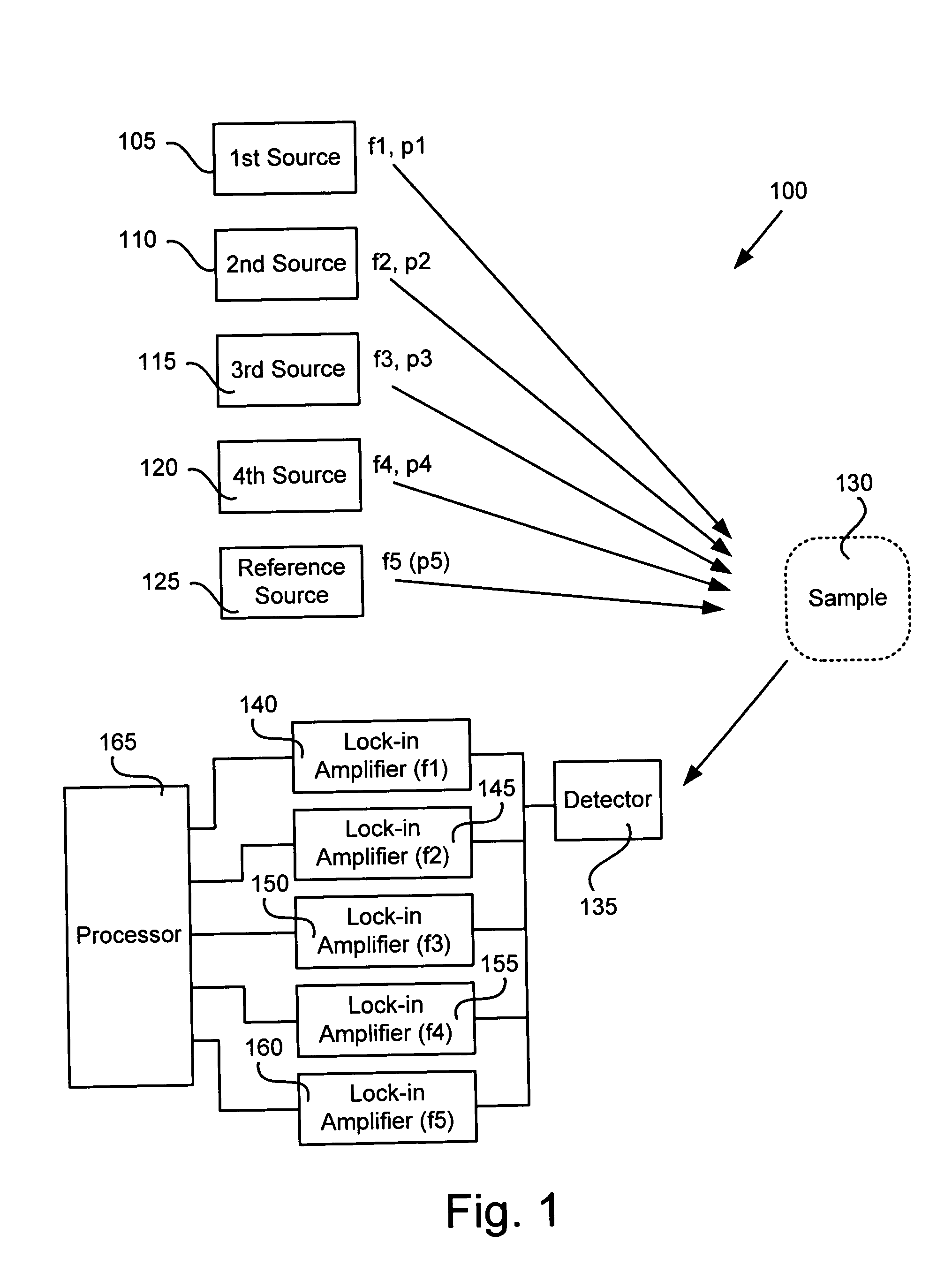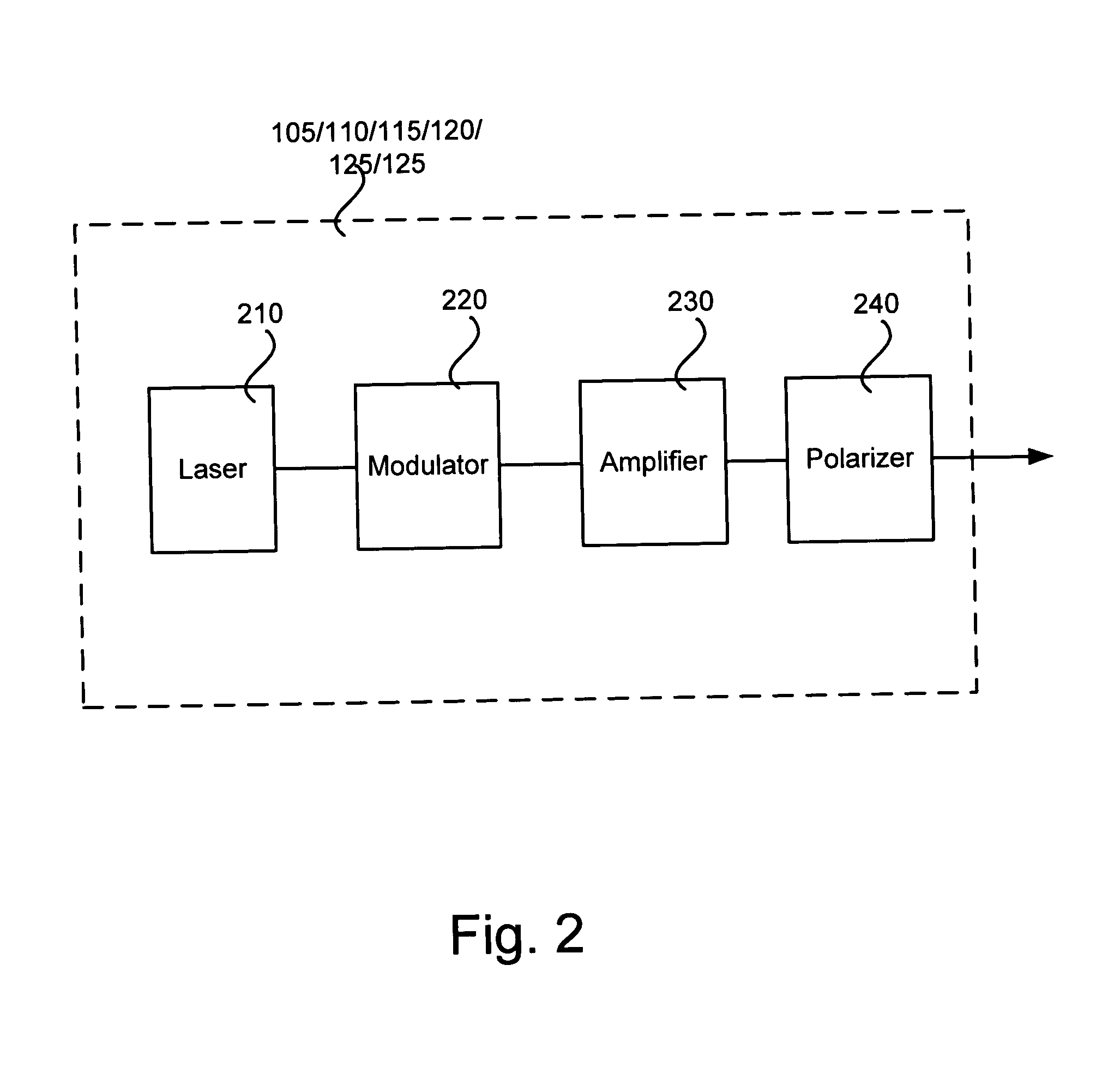Active multiple-color imaging polarimetry
a polarimetry and multiple-color technology, applied in the field of remote sensing, can solve problems such as trouble, image mis-registration, and mis-registration to some degree, and achieve the effect of avoiding mis-registration among images
- Summary
- Abstract
- Description
- Claims
- Application Information
AI Technical Summary
Benefits of technology
Problems solved by technology
Method used
Image
Examples
Embodiment Construction
[0017] The following detailed description of the invention refers to the accompanying drawings. The same reference numbers may be used in different drawings to identify the same or similar elements. Also, the following detailed description does not limit the invention. Instead, the scope of the invention is defined by the appended claims and equivalents.
[0018] As described herein, in one implementation consistent with the principles of the invention, a remote sensing system may modulate radiation at different frequencies and polarize the radiation with different polarizations before interaction with a sample of interest. A number of lock-in amplifiers may be used to process radiation detected from the sample to obtain information at the different polarizations from the sample.
EXEMPLARY SYSTEM
[0019]FIG. 1 is a schematic diagram of an exemplary active remote sensing system 100 according to an implementation consistent with the principles of the invention. System 100 may include fir...
PUM
| Property | Measurement | Unit |
|---|---|---|
| modulation frequencies | aaaaa | aaaaa |
| frequency | aaaaa | aaaaa |
| optical radiation | aaaaa | aaaaa |
Abstract
Description
Claims
Application Information
 Login to View More
Login to View More - R&D
- Intellectual Property
- Life Sciences
- Materials
- Tech Scout
- Unparalleled Data Quality
- Higher Quality Content
- 60% Fewer Hallucinations
Browse by: Latest US Patents, China's latest patents, Technical Efficacy Thesaurus, Application Domain, Technology Topic, Popular Technical Reports.
© 2025 PatSnap. All rights reserved.Legal|Privacy policy|Modern Slavery Act Transparency Statement|Sitemap|About US| Contact US: help@patsnap.com



